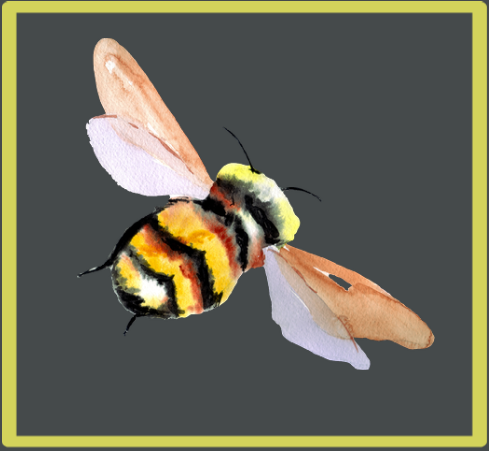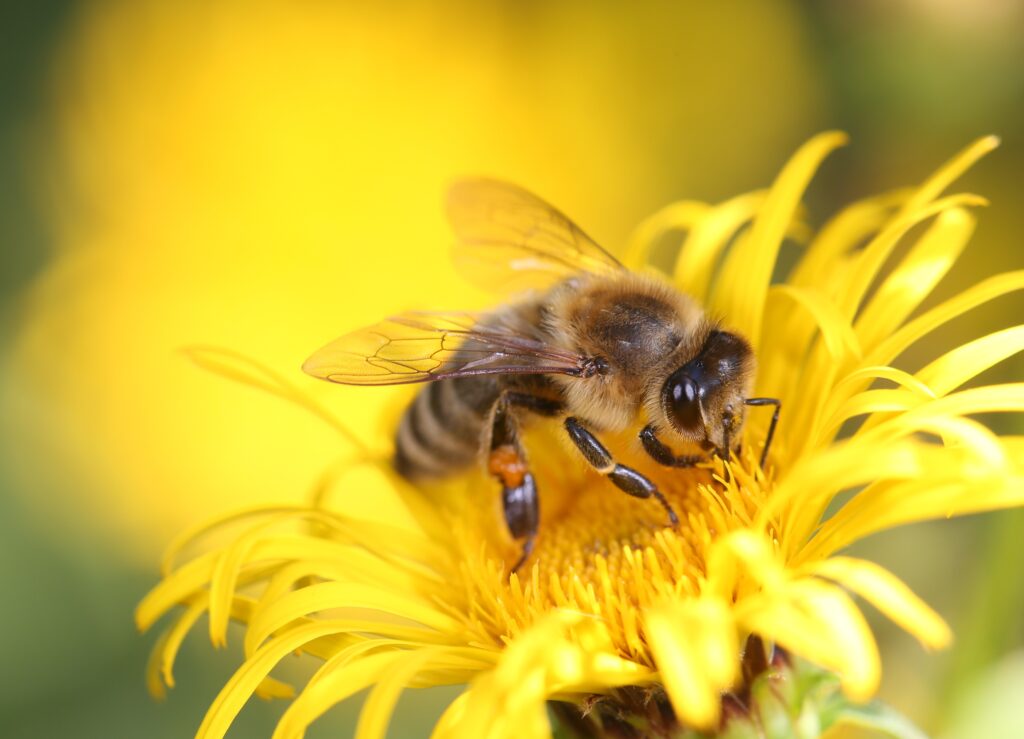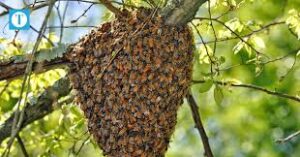Plants for bees and other pollinators
Whether you have a small patio, or a large garden, growing flowering plants is an effective way to help Britain’s bees and other pollinating insects, such as hoverflies.
Pollinating insects need food, water and shelter. They love plants which are rich in nectar and pollen. Nectar contains sugar for energy, while pollen contains protein and oils – forming a balanced diet.
Easy ways to help bees in your garden
What could be lovelier than a garden buzzing with insect life, colour and fragrance all year? With bees in trouble, our gardens are vital fast-food takeaways for bees and other beneficial bugs. As well as serving up a varied menu of plants they provide the shelter and nesting places bees need.
What’s more, bee-friendly gardening is more likely to be responsible gardening – growing the right plants, and avoiding chemicals in the garden.
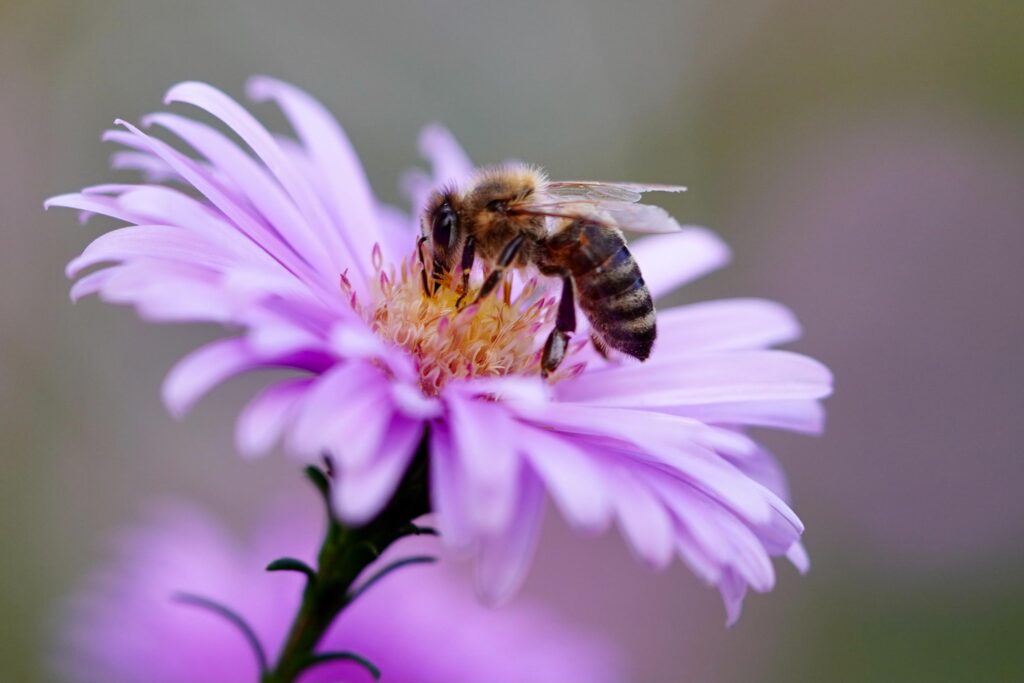
Grow 10 bee-friendly herbs
Herbs are easy to grow, and some are a valuable source of food for our bees and other pollinating insects. They also have the benefit of adding fantastic flavour to our meals. Short of space? Try marjoram, thyme, chives , sage or creeping rosemary in a pot. If you have more space in a sunny border, try a rosemary shrub.
Angelica, with its nectar-rich flowers, will attract plenty of early bees and other pollinators, and unlike many other herbs, can thrive in partial shade. Fennel is rich in nectar and pollen, and will attract a variety of solitary bees, such as Mining bees and Yellow-faced bees, as well as Bumblebees and Honey bees.
Do bees drink water? Yes, they need refreshment
Like humans, bees need water. Water is essential for honey bees to make food for their young, and keep their hive cool and humid. They collect water during the summer months.
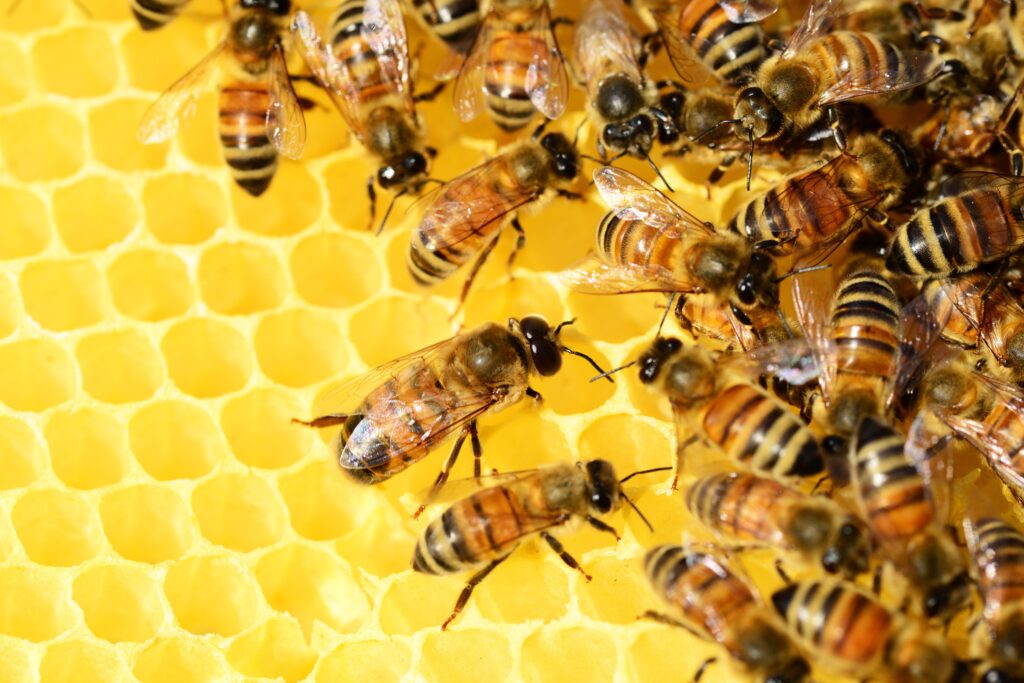
Fill a bucket or tray with water – preferably rain water – and put a few stones in it that are large and stable enough to give bees a safe place to drink from. Floating old wine corks on the surface also gives bees something to land on. Got a pond? Try adding floating-leaved plants, wine corks or rocks to give bees a landing pad.
Make a wildflower meadow for bees
Wildflowers such as cornflowers, cowslips, and the common poppy are all brilliant for bees and other wildlife. Pick up wildflower seed mixes at your local garden centre.
Here are a few simple steps to get wildflowers blooming in your garden. The ideal time to do this is September or October because this mimics the natural cycle when flowers typically drop their seeds. You can also sow wildflower seeds in spring.
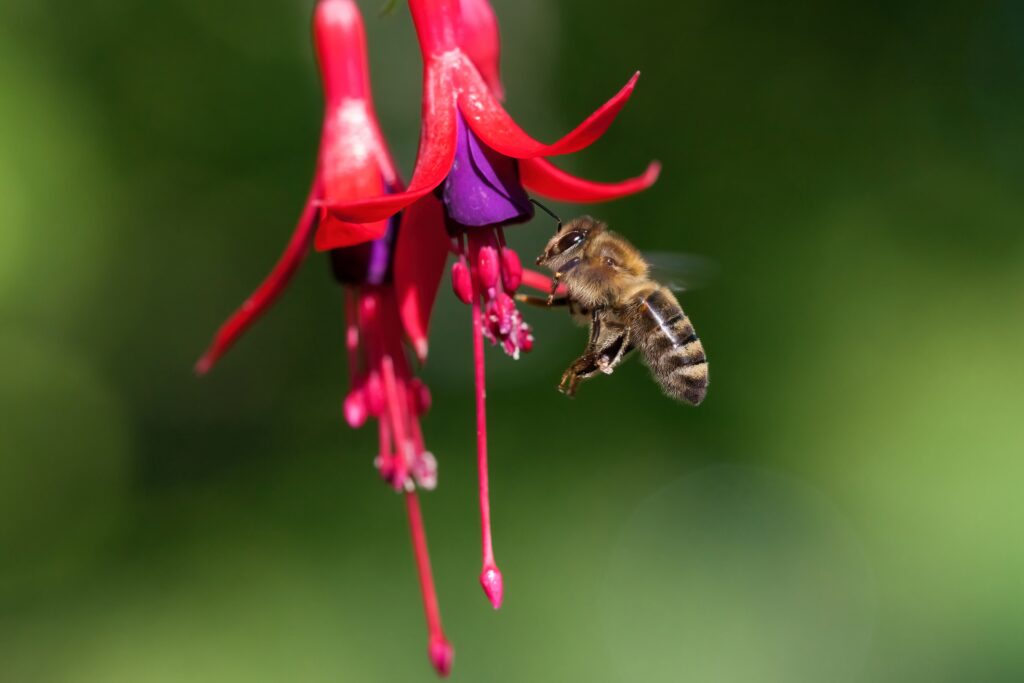
Remove any vegetation or turf. Alternatively, use a strimmer or lawnmower to cut the grass as short as possible, and then rake the ground to reveal patches of bare soil.
Wildflowers thrive in unfertile soil. Remove the topsoil, or dig the soil over to a depth of at least 15 cm to reveal the less fertile soil below. Scatter the seeds lightly. Use 3 quarters of a teaspoon of seeds per square metre. You can mix the seeds with sand first, to aid even sowing. After sowing, lightly rake the surface and firm down with the end of a rake or your feet. Water the soil if you’re sowing during a dry period.
